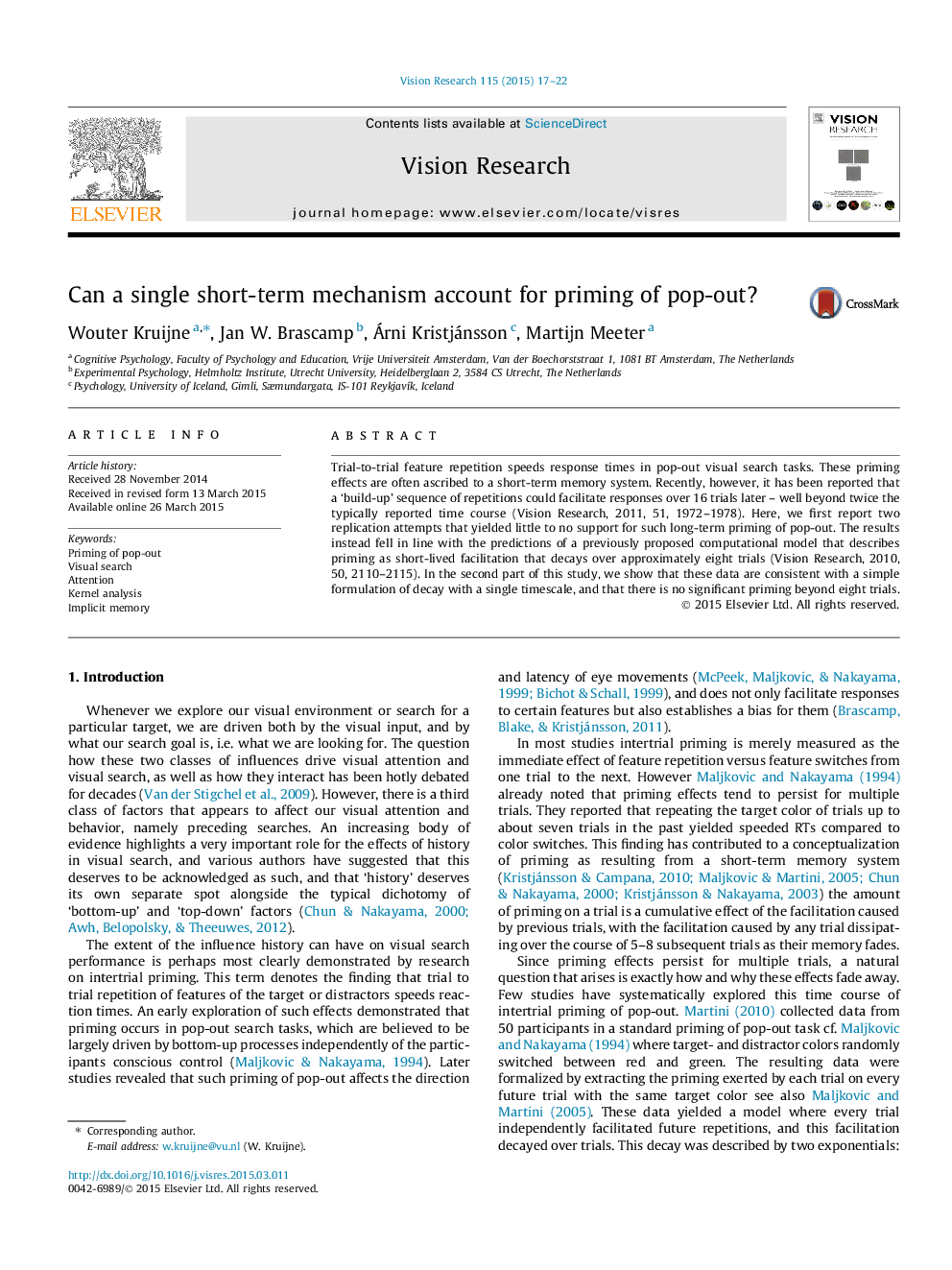| Article ID | Journal | Published Year | Pages | File Type |
|---|---|---|---|---|
| 6203124 | Vision Research | 2015 | 6 Pages |
â¢Priming of pop-out is a short-term phenomenon and decays in 5-8 trials.â¢This also holds after prolonged sequences repeating one target color.â¢This contradicts earlier reports with the same paradigm.â¢The results agree with a previously reported mathematical model of priming.
Trial-to-trial feature repetition speeds response times in pop-out visual search tasks. These priming effects are often ascribed to a short-term memory system. Recently, however, it has been reported that a 'build-up' sequence of repetitions could facilitate responses over 16 trials later - well beyond twice the typically reported time course (Vision Research, 2011, 51, 1972-1978). Here, we first report two replication attempts that yielded little to no support for such long-term priming of pop-out. The results instead fell in line with the predictions of a previously proposed computational model that describes priming as short-lived facilitation that decays over approximately eight trials (Vision Research, 2010, 50, 2110-2115). In the second part of this study, we show that these data are consistent with a simple formulation of decay with a single timescale, and that there is no significant priming beyond eight trials.
